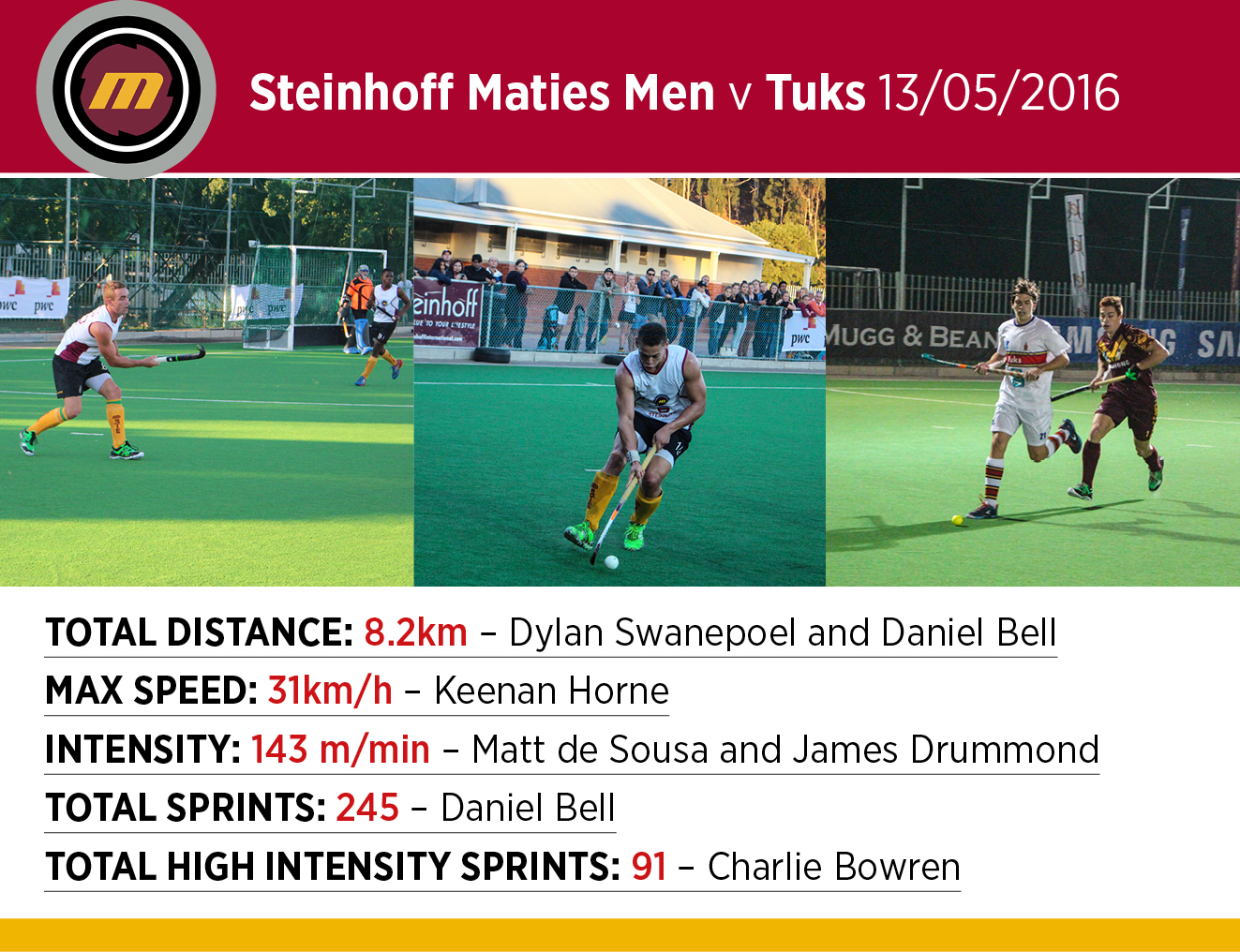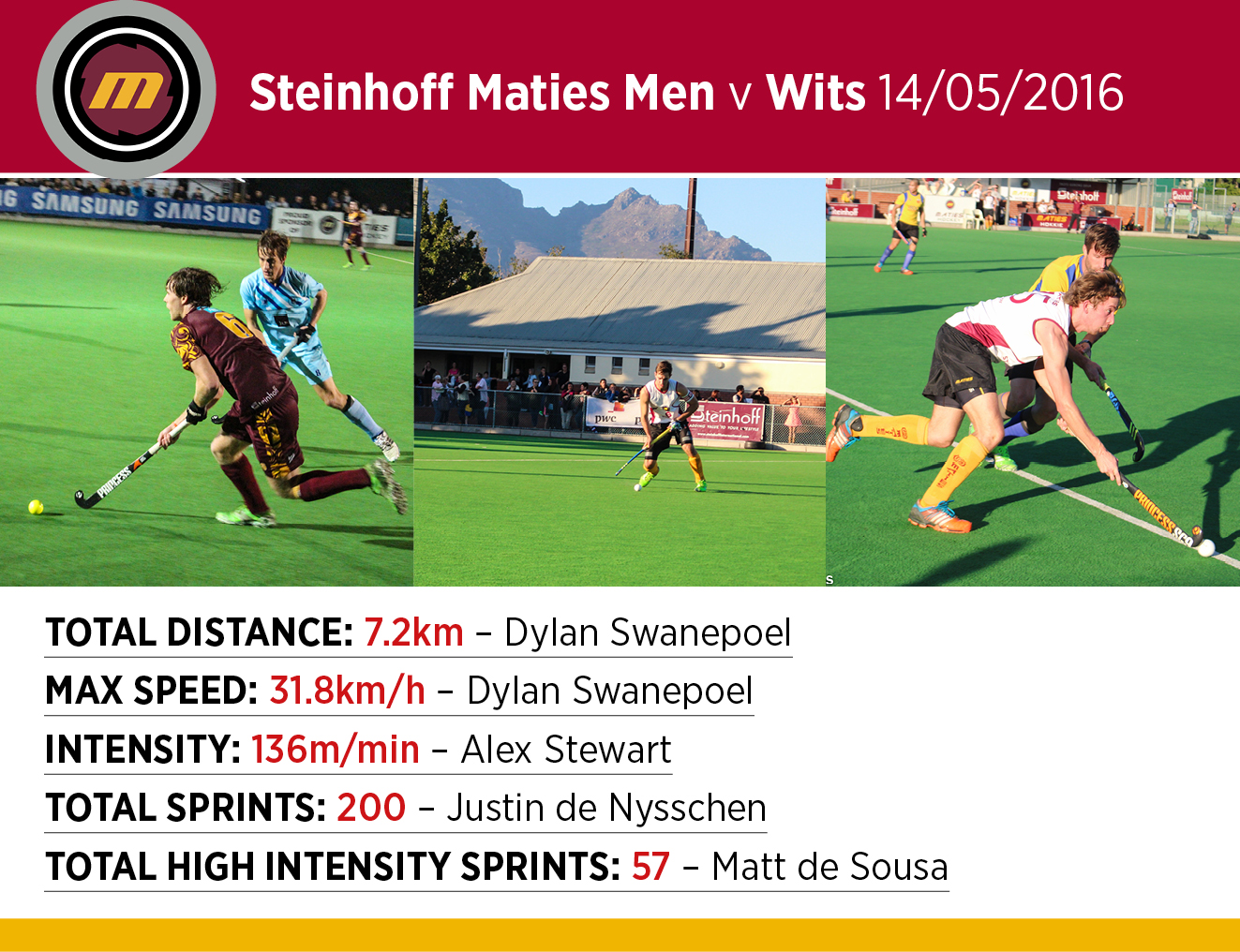GPS tracking help athletes train smarter and more efficiently
Managing a student-athlete's physical workload at university level is very important for the Maties Sport High Performance (HP) Unit. The VX Sport GPS athlete tracking system is one of the many tools that is used at the Maties Sport HP Unit to make sure teams and athletes train smarter and more efficiently.
"For years we could never measure how our teams or athletes physically performed on the field of play. At best we could take an educated guess as to how tough or physically demanding a match or a training session was, without having actual numbers and stats to back up or disprove what we saw. The VX Sport GPS system now allows us to measure how we play or train. Now that we have access to the numbers and stats on how we play, it has allowed us to critically look at how efficiently and how effectively we train our teams or student-athletes," said Grant van Velden from the HP unit.
"We have collected data from a number of our teams and student-athletes over the years and this has given us an idea of how physical demanding matches are on student-athletes across different sport codes, as well as across different positions within the same sports code. We ultimately want our teams to train more often like they play out on the field, so we use the data and stats collected from matches to help our teams achieve this. We try to match the intensity of games during training so that we train smarter and more efficiently with the limited time that we have with our student-athletes."
Van Velden explained that during the Varsity Cup competition, the Maties Rugby team played different conditioning games or "pockets" during training sessions. These "pockets" were either below, above, or at the same intensity that the players would experience during a match.
"By knowing how intense a Varsity Cup game is against a particular opponent, we can position 'pockets' accordingly in the team's training week so that we adequately prepare them for the intensity of the upcoming game or to recover from the previous week's game."
According to Van Velden, having access to this type of athlete tracking technology is very relevant in the university environment.
"Student-athletes are first and foremost students and athletes second. Due to this, their academic commitments are a priority during the day. This leaves us with maybe two hours training time in the late afternoon/early evening, two to three times per week if we are lucky. With this limited contact time, we have to train smart and efficiently otherwise we will not be able to maximise the training session to its full potential. By using the stats and numbers we get from the GPS units, we know exactly what we should do in a particular training session and can therefore design our training session accordingly in order to achieve that session's objectives."
The HP Unit currently has 30 VX Sport GPS units – 15 of these are "live" units.
"Live means that during a match we can instantly see on the laptop on the side of the field what is happening with a player on the field of play. Immediate changes can then be made if a player is showing signs of fatigue or is not reaching certain physical benchmarks that he or she would normally reach during a game. In an ideal world, training sessions will also be monitored with live units. This will then allow for communication between the coach, the sport technologist and the conditioning coach to make changes to a training session right then and there if certain physical benchmarks are not being achieved."
Van Velden added: "When a player has the GPS unit on, there is no place to hide on the field. Athletes who try to take shortcuts during training sessions will be caught out. Big Brother is watching you and in this case Big Brother is in space in the form of a satellite! We not only see if a player is doing too little, but also if he or she is doing too much."
Van Velden warns though that using only the data and stats from GPS to interpret how an athlete performed on the field will only give you half the story. "GPS data must be interpreted alongside video data. The GPS data can show that a player ran 9 km on the astro, which is a lot, but then the video will show that he achieved that distance without influencing play very much… he or she ran around like a headless chicken. Whereas another player may only cover 7 km on the astro, but his or her influence on the game was far more pronounced. So running further during a match doesn't necessarily mean you were the better player or more influential in the game. The stats need to be interpreted alongside video data and that is why video analysis is so very important as well."

The Steinhoff Maties Hockey men's team at the recent Varsity Hockey tournament used the GPS units for the matches played in Stellenbosch. According to Van Velden these stats, along with the previous year's stats, will come in handy when preparing for the USSA tournament in July.

